Wild Hearthstone has thousands of cards, and a wide variety of possible decks. This incredible deck diversity is sometimes lost when only looking at the few decks common in the highest ranks. Wildest of Wednesdays is a series aiming to highlight a different off meta deck each week with an in depth guide into its strategy and gameplay. The decks are selected for having interesting synergies and using rarely seen cards.
Void Contract. Despite seeing almost no play, it is, in fact, a real card - and this is a deck that can make full use of it and its unique effect, with the recently released Kazakusan to provide a new and powerful win condition after both players' decks have been destroyed. First off, the deck uses Bloodbloom to enable the potential of Void Contract on turn 4 (or even 3 with the coin). Being able to play it so early means it destroys a larger portion of both decks. The list also includes Altar of Fire and Gnomeferatu to remove more of your and your opponent's cards. The point of destroying your opponent's deck is for disruption - you get rid of any combos and possible win cons they might have.
For your own deck, you actually benefit from Void Contract destroying it - as deck size dwindles, you get to activate cards like Barrens Scavenger, Blood Shard Bristleback, Zephrys the Great, and Reno Jackson to help with survival. Finally, you have multiple powerful win conditions, every one of which will often allow you to pull ahead in the lategame once both decks have been destroyed or close to it: Kazakusan, Archivist Elysiana, and Neeru Fireblade. In addition, there is Taelan Fordring to tutor out a win con, which can be great to ensure you have at least one of them in hand before going all-in on deck destruction.
Overall, Void Contract Warlock uses Void Contract to great effect both to disrupt your opponent's plans and to enable powerful finishers like Kazakusan. Void Contract is very, very rarely seen, but with Kazakusan, it can finally have a deck that actually has a unique, coherent and enjoyable gameplan. If you like disruption, Kazakusan, or want to seriously surprise your opponents, give Void Contract Warlock a try!
Huge Thanks and Credit for Void Contract Warlock deck development to Java - it wouldn't have been possible without him!
Note: If you don't have either Archivist Elysiana or Neeru Fireblade, they can be replaced with Envoy Rustwix or Chef Nomi. In general, don't hesitate to comment if you want to try out this deck but are looking for a substitution for any specific cards.
Now, let's get into a guide on playing the deck. It's going to go through major overarching strategies to keep in mind, how to mulligan, gameplay tips on key synergies, and card choices.
Strategies
First you will destroy much of both decks with deck burn cards, while using removals and heals to stall. Then you will have some powerful stabilization tools come online that only work if your deck size is low, and finally you finish off the opponent who will have an empty or close to empty deck with one of your powerful win condition cards that work when your deck is gone or almost gone (you have 4 possible finishers, and the chance that all are burned is very low).
Deck Burn - You use Void Contract along with Bloodbloom to discount it as your main source of deck burn - this can burn over 10 cards from each deck in one go. You can also use Altar of Fire and Gnomeferatu for more burn afterwards.
Survival - You have powerful Warlock tools including Defile, Dark Skies, and Dreadlich Tamsin to remove enemy minions and keep the board clear. After enough deck burn and card draw, you will have Reno Jackson active for a full heal, Zephrys the Great for clears, Barrens Scavenger as a cheap Taunt, and Blood Shard Bristleback for healing and removal. This ties into your deck burn strategy - the faster you can burn your own deck, the faster you get these powerful survival options online.
Finisher - At some point - starting as early as turn 5 depending on your draws - both decks will be empty or close to it. The deck has 3 main finishers and a backup option to close out games that reach this state and go into fatigue. Neeru Fireblade opens a portal for a full board of 3/2 imps each turn, while Archivist Elysiana and Kazakusan refill your deck, staving off 10 turns of fatigue. Finally, Zephrys the Great can get Lord Jaraxxus to provide consistent board pressure.
The deck can struggle against aggro because deck burn is inherently low tempo, although it does have removals and heals to be able to mount a comeback and win against aggressive decks sometimes. Void Contract Warlock is really good against slower decks including midrange, control, and especially combo where you can burn either value or combo win conditions and then finish off the game with one of your own.
Here are two pictures which show what the deck can do: A game with both decks destroyed, Neeru Fireblade up, and ready to play Kazakusan on turn 8; and using Bloodbloom Void Contract into double Altar of Fire and Gnomeferatu early to destroy the opponent’s deck by the end of turn 5.


I have never seen any other deck (including Tickatus decks) destroy so many cards so early - even with their best highrolls such as from The Dark Portal - and having the possibility for this sort of thing makes Void Contract Warlock unique and extra enjoyable to play.
Mulligans
- Try to get Bloodbloom and Void Contract (one copy of each). If you have one but not the other, mulligan everything else away to get the other. This combo is crucial to this deck, so you should mulligan to get it as the first priority.
- If you already have a Bloodbloom and a Void Contract, you can keep a second copy if you really want to destroy both decks quickly, but the more optimal mulligan choice is to only keep one of each.
- If you have one of each, you can keep any win condition card you like in hand, or Taelan Fordring which will draw one. If you have a choice of win conditions, Kazakusan is the most powerful keep, followed by Neeru Fireblade and Archivist Elysiana.
- You can also keep anti-aggro spells such as Defile and Dark Skies in this scenario, or more burn like Altar of Fire and Gnomeferatus if you want to go for maximum early deck destruction. It really depends on whether you think you’re against aggro, combo, or control, and if you want to risk losing to aggro to have a chance at the very epic "turn 5, both decks have already been destroyed" scenario.
Gameplay
The key to playing this deck well is being able to fit in your low tempo burn turns at the right moments while using your removal, Taunts, and heals on other turns to be able to survive to your endgame.
Below are gameplay tips regarding many of the synergies in this deck and how to use them effectively.
Void Contracts and other Deck Destruction
First of all, you should try to pair Void Contract with Bloodbloom to be able to play it for 4 mana. Playing it for 8 is alright against slow control or combo decks, but even then it's usually better to combo it with Bloodbloom so you can use the 4 mana you save on other things.
Void Contract rounds up if there is an odd number of cards in a deck. This can be relevant to keep in mind, as if you have 21 cards in the deck before Void Contract, you'll have 10 after - and your Blood Shard Bristlebacks and Barrens Scavengers will become active.
When should you play Void Contract? In general, as early as you can as it has more of an impact since it destroys half the deck and the deck size keeps decreasing. You have 4 cards that provide you with a win condition after both decks have been totally destroyed, and you usually only need one to win. Therefore, even if you have not drawn any of those (Neeru Fireblade, Kazakusan, Archivist Elysiana, and Zephrys the Great), it's still safe to play Void Contract as there's only a 1/16th chance that all 4 of these will be in the top half of your deck.
If you are low on health, don't play Void Contract + Bloodbloom as soon as possible - instead, you can time it so that you play it when you have 21 cards remaining in your deck and so are left with exactly 10 cards after doing so. This way, you can play Blood Shard Bristlebacks that same turn to deal damage and restore health, and Barrens Scavengers for 1 mana to set up a Taunt wall.
If you have Taelan Fordring in hand, you can play him before Void Contract to guarantee drawing one of your win cons (either Kazakus or Elysiana).
Since Void Contract destroys half of each deck but Altar of Fire and Gnomeferatu always remove a fixed number of cards, it's better to save them for after you have played Void Contract to burn the maximum number of cards in total. However, if you need tempo and have no other play, you can play a Gnomeferatu just for its 2/3 body. Also, if you see you are close to a 10 card deck but haven't been able to get the Void Contract & Bloodbloom combo off yet, you may want to use Altar of Fires to destroy your own deck despite making a future Void Contract less effective to be able to activate your Blood Shard Bristlebacks and Barrens Scavengers faster.
When you have played Void Contract but still don't have a single win condition in hand, it's risky to start using your Altars of Fire. You should save them for a bit while you draw into one of your finishers, including using Taelan Fordring to help get you one. Once you have a win condition in hand, you can safely start going all-in on deck destruction with Altar of Fires. You usually don't need more than one way to finish games, so it's better to go to the endgame scenario faster rather than wait to find another one of them.
You should tap aggressively in the early turns if you are not under a lot of pressure - using your hero power to get the Void Contract Bloodbloom combo faster is generally better than playing a Gnomeferatu or Armor Vendor on an early turn. Even if you have card draw like Kobold Librarian on turn 2, it's better to tap and then use a tap and the Kobold Librarian on turn 3 for maximum draw.
Endgame Tips
If you have both Kazakusan and Archivist Elysiana in hand, always choose Kazakusan as the card to play. He is always stronger, with more stats and a way better card pool to discover from.
After you play Kazakusan or Archivist Elysiana, Blood Shard Bristlebacks and Barrens Scavengers will still have their bonus effects active as the deck size will become exactly 10. However, Zephrys the Great, Reno Jackson, and Neeru Fireblade will become inactive. Therefore, in most cases (unless you are really desperate to prevent fatigue damage, or want to get started drawing Kazakusan Treasures faster) you should play these 3 cards before Kazakusan or Elysiana refills the deck.
Your ideal endgame scenario is both decks destroyed and you having controlled the board and your health total with your survival cards, with one or more win condition cards in hand. Then, you play them to give you the edge and win by a large amount of board pressure (with Neeru or Lord Jaraxxus from Zephrys) or fatigue (with Elysiana or Kazakusan). You really do need four finisher cards in this deck for consistency given the amount of burning you are going to do, but don't worry about burning any one of these win cons - some are stronger than others but in general, any one of these finishers can be enough to win even if 3 of the 4 got burned.
If you see that you have Neeru Fireblade in hand as well as either Archivist Elysiana or Kazakusan, don't be afraid to play Neeru as a 5/5 body for tempo on turn 5 if you're facing board pressure and need the tempo, having no better plays or clears available. Elysiana or Kazakusan are more than enough to win.
Zephrys the Great can combine with a board of 3/2 imps generated by Neeru Fireblade to give Bloodlust for lethal. You can trade one imp in to be able to play Zephrys and use Bloodlust on 6 imps for a total of 36 damage.
Brann Synergies
The main cards you want to use with Brann Bronzebeard are Gnomeferatus for more deck burn and Blood Shard Bristlebacks for more damage and healing.
Using him with Zephrys the Great to get more clears can be good as well, and you can use him with Armor Vendors and Kobold Librarians too. This happens rarely, but if Brann survives to turn 6 he can combo with Dreadlich Tamsin - this deals 6 damage to all minions but be careful to avoid milling yourself too much as it will also draw 6 cards.
Don't use Brann with Neeru Fireblade - two portals are worse than one as there is less space for imps. Try to trade Brann away if he is on the board when you're about to play Neeru. You should also be careful about playing Archivist Elysiana or Kazakusan when Brann is on the board, as he will make their 5 discovers trigger twice and only the second 5 will actually end up in your deck in the end. This means you discover 10 times, but only 5 are actually relevant. Discovering 10 times takes a lot of time, so you should choose quickly for the first 5 - don't spend time thinking to make the optimal choice - and then actually focus on making the right discover decisions for the next 5.
Kazakusan Treasures
Which Kazakusan Treasures are best for this deck? In general, you don't need anything that provides board presence or face damage. As long as you can stall and deal with the remaining threats from your opponent's hand, you should win by fatigue as their deck will be destroyed (all of this applies to Archivist Elysiana discovers as well - look for board clears and any cards that can let you control the board or stall as the first priority). If you want to see all the Treasures in one place visually, check this out: Kazakusan Treasures. This is a specific guide on which Treasures to look out for:
Very High Quality (The best cards that are always great for this deck):
- Annoy-o Horn: Can stall and let you win by fatigue as it may take minions multiple turns to get through a board of Divine Shielded Taunts (at which point you can play your second copy of this).
- Staff of Scales: Great removal to deal with any minion threats.
- Wand of Disintegration: Even better than Staff of Scales, as it totally clears the board regardless of Deathrattles.
- Book of the Dead: Board clear that also deals face damage.
High Quality (Compared to Very High Quality, these can be as good, but are more situational):
- Hyperblaster: Only removes one target at a time, but does so 4 times, making it pretty good.
- Gnomish Army Knife: This can be great if you use it on a Kazakusan minion or a 1 mana Barrens Scavenger, the keywords will let you restore health and clear at least 2 minions.
- Vampiric Fangs: It's removal that also heals you, which is quite good. Better against decks with big minions and worse against those with wide boards of small ones.
- Looming Presence: This can be really good if you have some very high or high quality Treasures and you want to be able to ensure you can draw them. The armor is a nice bonus as well.
Medium Quality (Can be strong, but not as good as the higher quality options):
- Dr. Boom's Boombox: This is good for general damage, especially if you still have a Defile or Dark Skies in hand to activate the Boom Bots immediately.
- Canopic Jars: If you can combo this with a Treasure that makes a wide board like Dr. Boom's Boombox, Ancient Reflections, or Annoy-o Horn, this can let you control the board with sheer minion stats, so despite not being a clear it can be useful in some situations.
- LOCUUUUSTS!!!: In most Kazakusan decks, this is the best treasure, but here you don't need face damage to win so you are more likely to use it as removal which it isn't as good as.
- Embers of Ragnaros: Great face damage card that can be ok as removal, but again, you win against decks with no minions anyway just due to winning fatigue, so it's not as high quality for this deck as a board clear that can ensure a win in case your opponent starts playing minions.
- Holy Book: It's ok as removal, but it only removes one minion. Can be good against big decks.
- Bubba: It can remove a minion, but it is a lot weaker than other removal options as 6 damage isn't always enough.
- Necrotic Poison: Low cost removal, but only on one target.
- Crusty the Crustacean: It's ok, but it only hits one target and won't stop a big board as well as higher quality Treasures can.
- Banana Split: Can be good if you have a Barrens Scavenger, otherwise it's weak.
Low Quality (Pretty weak for this deck, don't pick these unless you have no choice or are in a unique situation):
- Blade of Quel'Delar and Hilt of Quel'Delar: You rarely get Quel'Delar itself and these cards are really bad by themselves. You don't need a 3/3 buff or a 2 attack weapon.
- Pure Cold: Pure face damage is unnecessary in this deck, although you may want to pick it if your opponent has a weapon.
- Wax Rager: You don't need board pressure to win and this does nothing to protect you against a minion assault the turn it's played.
- Puzzle Box: Useless if behind and win more if ahead.
- Beastly Beauty: It's pretty weak, and only deals 2 damage the turn it's played.
- Mutating Injection: It's not impactful enough as you don't have high hp minions in the deck. Better go for a removal.
- Clockwork Assistant: It's just stats and has no immediate board impact.
- Spyglass: Really weak and usually useless.
- Ancient Reflections: This can be ok depending on what minions the enemy deck is playing, but lacks good targets in this one.
- The Exorcisor: Unless you really want Silence, this is a lot weaker than other choices you will get.
- Grimmer Patron: You don't need minions that do nothing the turn they're played.
Card Choices
This section is going to go through the main packages of cards in the deck. Each package has cards that help the deck with a specific goal. When playing the deck, it's useful to know what purposes each card serves and what other cards in the deck have synergy with it or help achieve the same purpose. This section might also be useful if you're interested in the reasoning for why each card was included in the deck.
Something to note is that Brann Bronzebeard is not part of any card package but is generally good to get extra value from Battlecries.
Void Contract Package
These cards combine for you to be able to play Void Contract for only 4 mana, albeit at the cost of 8 health. This is key to allow Void Contract to be played early and have the most impact.
Supplementary Deck Destruction
These cards supplement the overall deck destruction gameplan of Void Contract.
Removals and Anti-Aggro
These cards help you gain armor and clear enemy boards that develop after your low tempo deck destruction turns, and are all active before your deck size gets low.
After-Burn Stabilization
These cards will be active once your deck size is low, 10 cards or less for Blood Shard Bristleback and Barrens Scavenger and around that area for Zephrys the Great and Reno Jackson (sometimes it takes a bit more deck destruction or drawing to get them active). These cards heal, provide Taunt, destroy enemy minions, and generally make it possible to stabilize the board and your health total after you spent 8 health and 4 mana on a Bloodbloom - Void Contract play and lost tempo.
Card Draw and Value Generation
Drawing cards helps you get your deck emptied faster as well as get to your Void Contract - Bloodbloom combo more consistently. Raise Dead generates value and can get key minions back. Taelan Fordring is special as he is targeted card draw that gets you a win condition.
Win Conditions
Neeru Fireblade, Archivist Elysiana, and Kazakusan are your main win conditions, which you want to activate when your deck is completely or almost completely empty. After both decks have been destroyed by Void Contract and other deck destruction, any of these can provide the final value push to win the game. You can also use Zephrys the Great to get you Lord Jaraxxus as a backup win condition if all three of these got burned.
Void Contract Warlock is a deck that uses Void Contract to its full potential while having a very neat endgame with Kazakusan, Neeru, and other powerful finishers. This is a supremely fun and unique deck for both disruption effects and value. If you have a question or comment, or are wondering about a card substitution, post below.
What are your favorite wild decks? Which off meta decks have you been playing? Share them via our deckbuilder and let us know in the comments below!


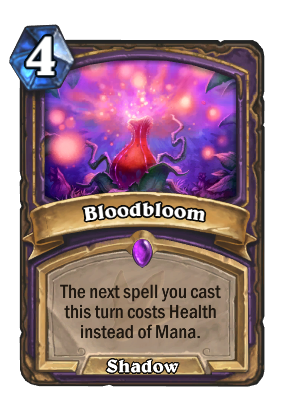
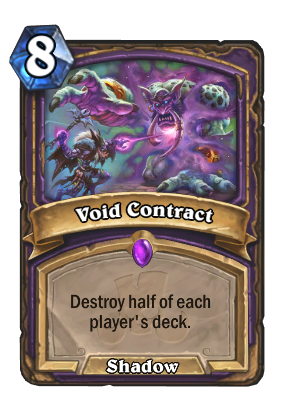
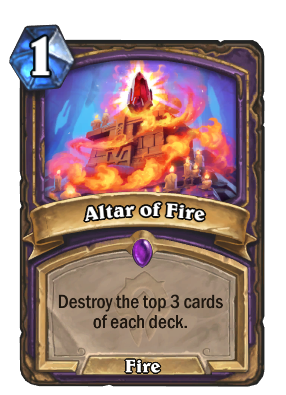
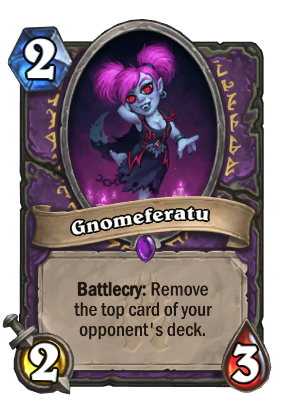
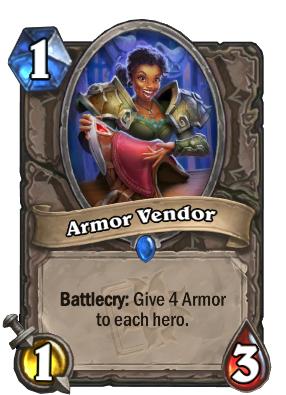
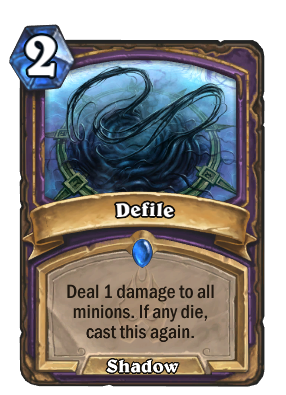
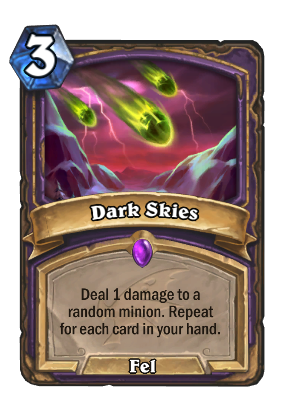
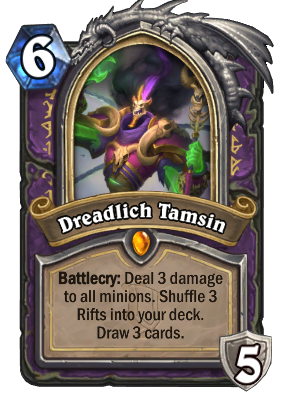
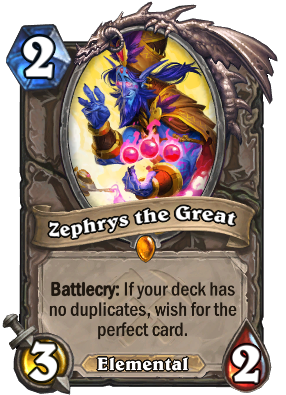
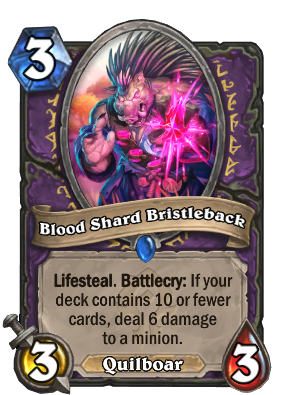
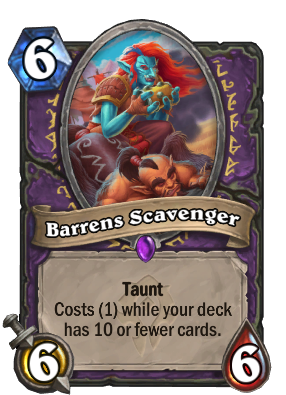
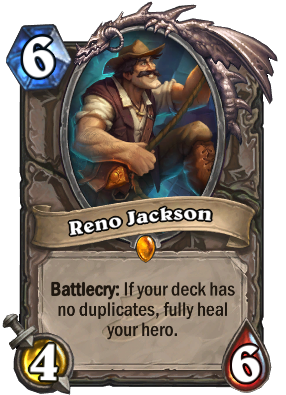

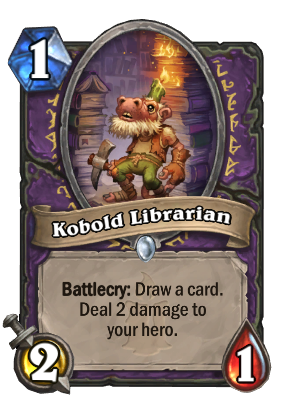
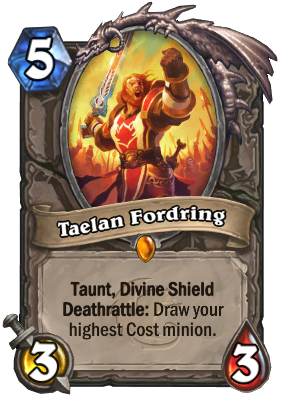
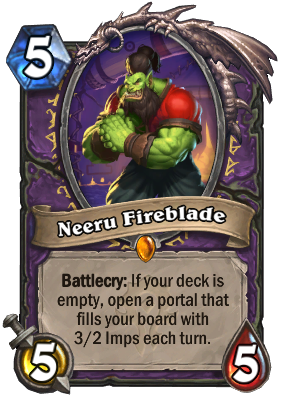
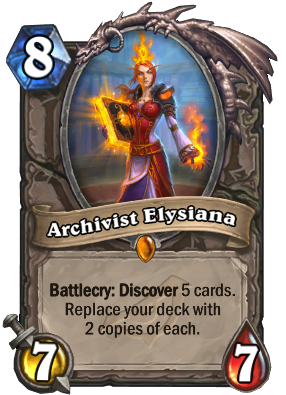
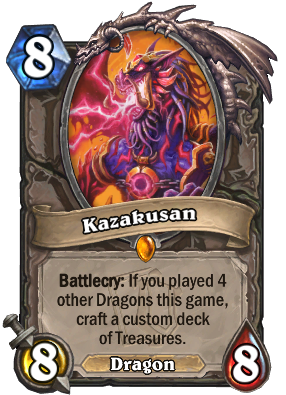





Comments
You already know I love this deck. I hope future sets lean more into disruption tools for Warlock (and Demon Hunter as well.)
Looks fun! How often does it win?
If you want to rank up in the current wild meta, don’t play this deck. I marked it as for fun and casual, I marked some decks in the series ranked and you can play those to rank up: Even Hunter, Tax Paladin, and Freeze Galakrond Shaman.
This one is purely for fun, you can play it and win against druids and warlocks a lot of the time but warriors and hunters will not be good matchups.
This deck is very inspired, and I love that it pulls together so many Warlock packages!
It's truly a shame wild is so unfriendly to this type of gameplay these days. It also has so much potential in standard if a few more end-game payoffs were put back into rotation (e.g. Chef Nomi, Archivist Elysiana, keeping Envoy Rustwix).
Great idea, and great work!
Thanks! Maybe it will be better if the Stormwind Quests ever get nerfed, but for now it’s at least something that’s unique and fun. Your list looks interesting for standard, who knows maybe they put Void Contract into core.
Here's the list I came up with:
### Void Contract
# Class: Warlock
# Format: Wild
#
# 2x (1) Altar of Fire
# 2x (1) Touch of the Nathrezim
# 2x (2) Defile
# 2x (2) Drain Soul
# 2x (2) Gnomeferatu
# 2x (2) Soul Shear
# 2x (3) Blood Shard Bristleback
# 2x (3) Dark Skies
# 2x (3) Free Admission
# 1x (3) School Spirits
# 2x (4) Bloodbloom
# 1x (4) Hysteria
# 1x (5) Envoy Rustwix
# 1x (5) Neeru Fireblade
# 2x (6) Barrens Scavenger
# 1x (7) Chef Nomi
# 1x (8) Kazakusan
# 2x (8) Void Contract
#
AAEBAavABAbSmQOsywP24wP44wPz7QOEsAQMkMcC58sCrs0C1IYD66wDzdIDld4D6+0D8O0D8e0Dg/sD56AEAA==
#
I focused on pulling out minions since all of them are so high impact--the rest is just control and deck deletion.
Thank you for the excellent write-up Swiz! Very fortunate to have one of my passion project decks featured here. Your contributions to the refinement of this deck have been very helpful. Bravo.